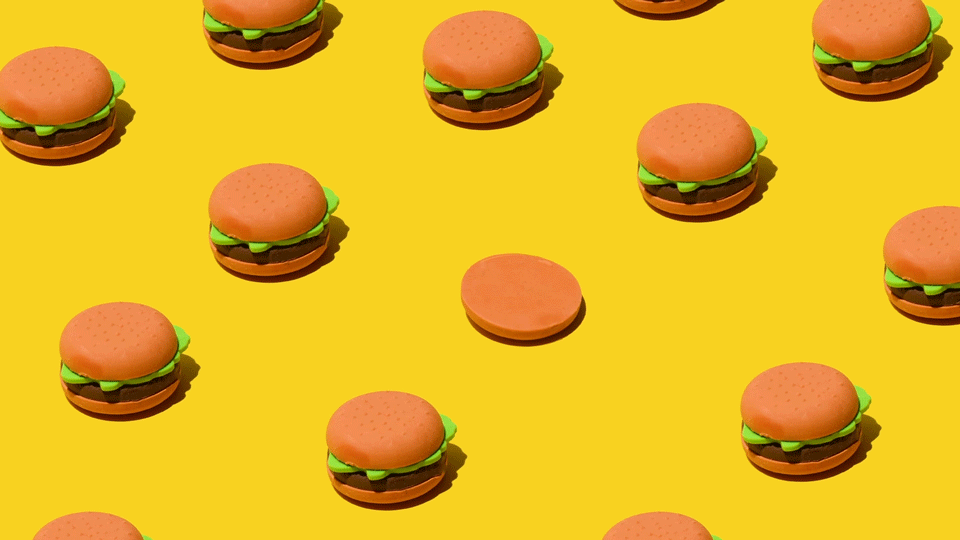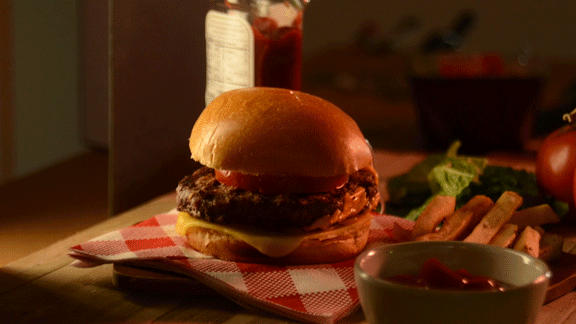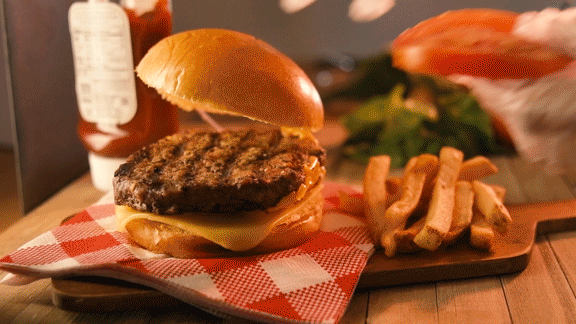Animating food is one of our favorite things to do in the studio. But honestly, it's also one of the most frustrating. Apart from the fact that food doesn't stay fresh for long, it also falls apart quickly.

Thankfully, you don't have to stress about the same issues we faced when we started animating food. With the tips below, you'll drastically improve your success rate even if you don't have experience working with food yet.
Tip 1: Always source fresh ingredients
Back when we were still starting, we used to buy the food items we needed the day before. That way, we didn't have to waste time running around on the day of the shoot.

Unfortunately, many of the food items we bought would often stop looking fresh even when stored properly in the refrigerator. Strawberries and raspberries were particularly dreadful that we often ended up buying a new batch before doing the shoot.
These days, we go to the grocery store/fresh market hours before our photoshoot. Sure, some of the food items there have been around for a few days. But at least, we get to choose the ones that look perfect for the stuff we need to do.
Tip 2: Always buy reserves.
Even if you prepare new food, you'll notice that food doesn't stay fresh for too long, and it gets worse when you have to animate it for an hour or more.

We always look for extra food items that more or less match the size and shape of the original piece we use for the shoot. For instance, when we animated our burger, we had to cut out several tomato slices that looked similar to the first one. That way, we can easily replace it once it starts looking soggy.
Also, make sure the color of your reserve food item matches the original. It's essential, especially when it comes to cooked or baked items. If your extra bread bun looks darker than your first one, people will notice it.
Tip 3: Rig the moving parts of your food
Just like when animating ordinary objects, rigging is also crucial for food stop motion. But how do you attach rigs to delicate food items? Well, there are several methods available depending on what type of food you're animating.

The most common one is using a flexible wire. Since it's pliable, you can bend it to take the shape of the food you want to animate. It also has a smaller surface area, so you can stick it into food without breaking it.
As you can see in the sample GIF above, we even used it to make our top burger bun move. We created a two-pronged fork out of a single wire to poke into the bread. To make the bun move, all we had to do was to adjust the wire each frame.
Tip 4: Don't be afraid to fake it.
Most food photographers get a lot of flack for "faking" some of the ingredients in the food they shoot.
Unfortunately, faking some food elements is a necessary evil, especially since a single photoshoot could take hours to finish. Everyone knows leaving food outside for a period will affect its freshness.

The burger we used for this animation was from a local restaurant. By the time it was ready, the cheese was hard and didn't look appetizing. So we replaced it with a store-bought cheese which we carefully melted using a heat gun. The result made the burger more appealing, even though the cheese we used wasn't the original one.
Of course, it's essential that the food item you animate still matches the one you're advertising. Just because you're doing a stop motion commercial filled with whimsical concepts doesn't mean you can get away with making an item look like something it's not.
Tip 5: Keep retouching your food.
It doesn't take long before food stops looking fresh. Unfortunately, the very nature of stop motion animation forces you to keep food items in the open longer than you usually intend.

To keep your food looking fresh, you'll need to fix it once it starts looking dull. In our case, the meat patty we used started looking dry merely ten minutes after we began to animate.
Our solution was to brush the meat with a thin layer of olive oil to make the patty glisten again. Inevitably, the oil dissipated after some time. But when that happened, we simply applied a fresh layer again.
Food animation requires different techniques that almost makes it feel like a distinct subgenre of stop motion animation. Reading all sorts of food styling books helped us achieve quality results. So feel free to do some more research when preparing food for photoshoots to help bolster your skills.